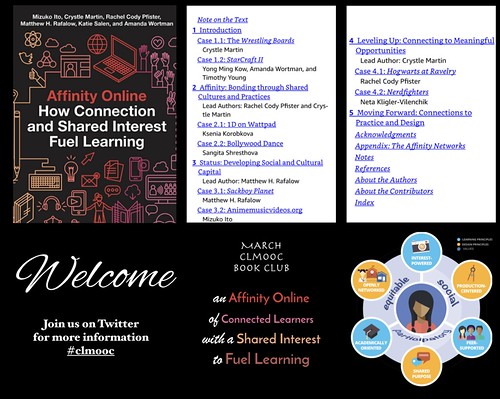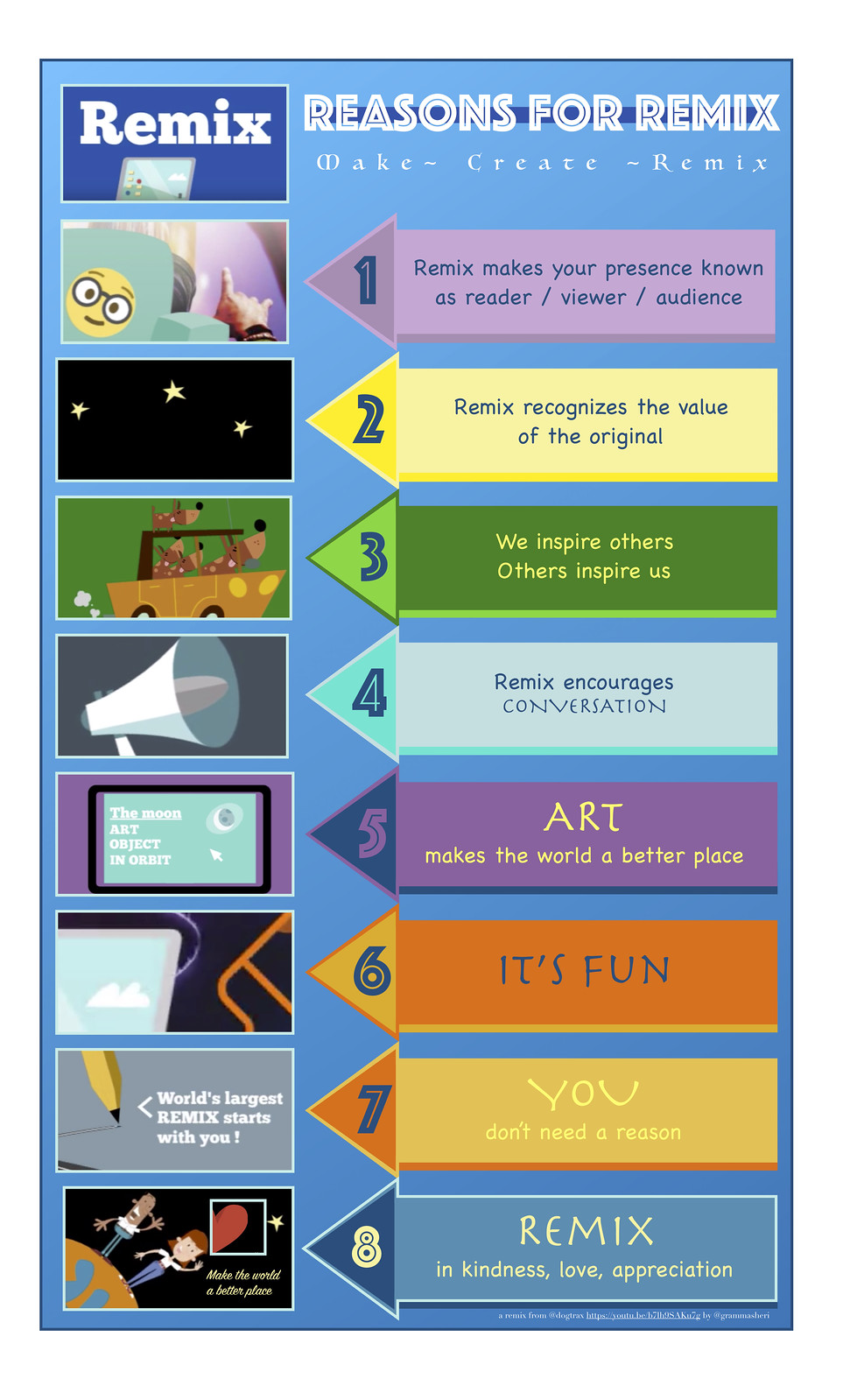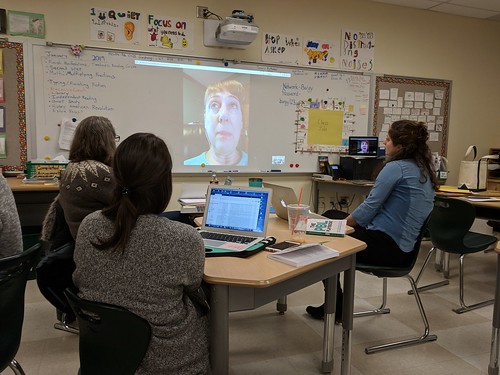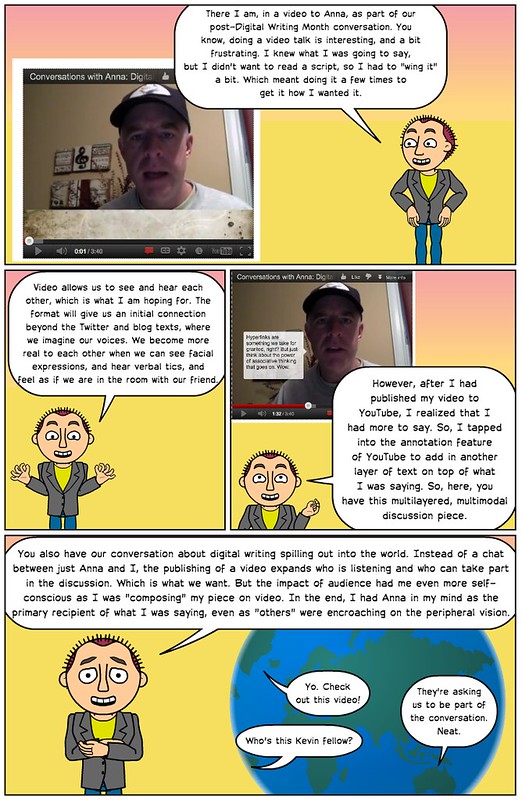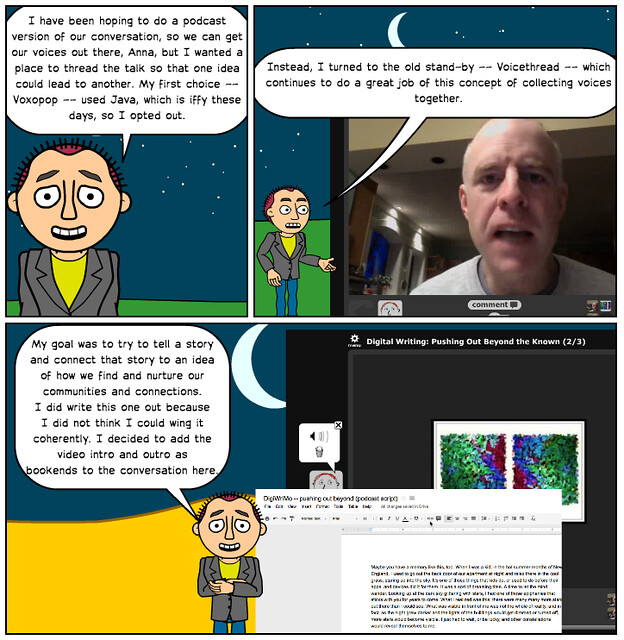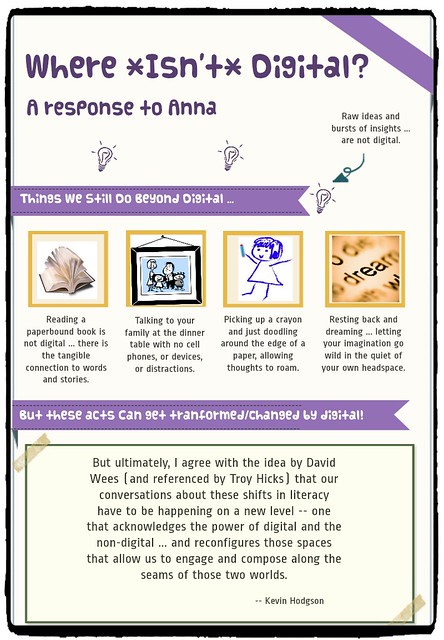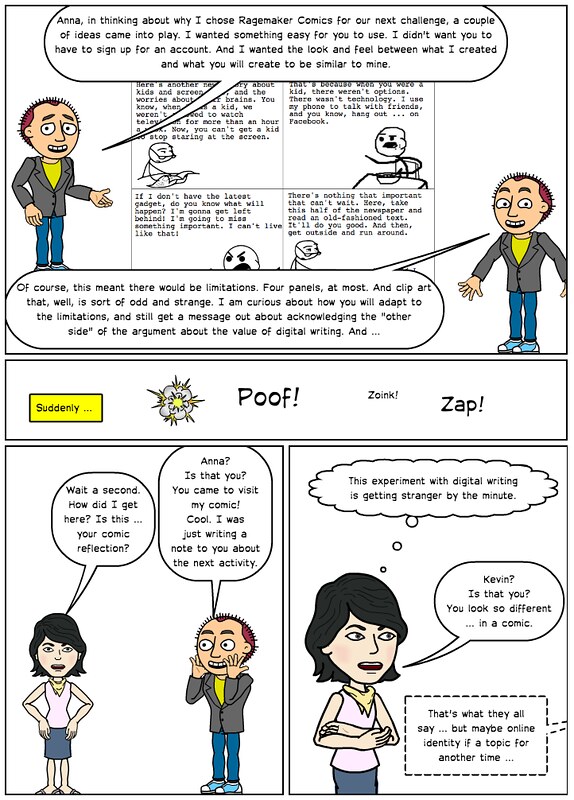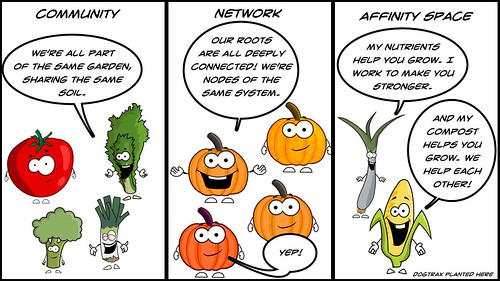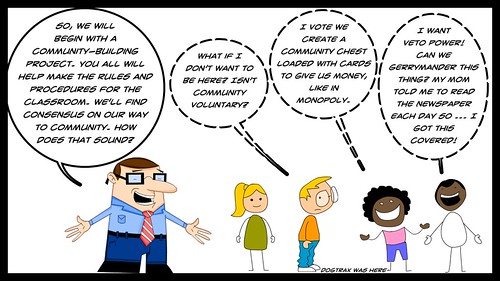I still remember the student who came back from a weekend trip to Boston, all hyped up about the cosplay convention, and how excited they were during our morning meeting that they had found others who were into what they were into. Their classmates looked on as they explained the concept of dressing up like comic characters and interacting with others as if they were crazy. The student showed us pictures, and we all were intrigued.
The classmates, though, didn’t understand. They were curious because it was different but they sort of shrugged it off as another of this student’s eccentricities. One of many. (Which is why I liked them so much).
What struck me most, though, is that this student was sharing this sliver of life with us not only because they had taken part in the event gathering, but also because they had discovered an online space where they were now writing fan fiction stories and connecting with others in the cosplay community.
This memory came back to me as I began reading the new book that folks and friends in the Connected Learning Massive Open Online Collaboration (CLMOOC) has begun reading together for our March book club. The book — Affinity Online: How Connections and Shared Interest Fuel Learning — is a researched dive into the current field of how young people are finding more niche homes in online spaces where they connect with others through shared interests, and use writing and making and remixing to showcase their talents.
At CLMOOC, we will be sharing some guiding questions in online spaces over the month of March, sparking discussions. Even if you have not yet read the book, we hope you might have ideas to contribute. Write where you are, and share where you can. We’ve often defined CLMOOC as its own Affinity Space, but maybe that is an idea to grapple with, too.
The book contains overviews of different themes but also rich stories of young people and their affinity spaces — the first chapter, for example, gives us insight into a network of people who knit on the theme of Harry Potter in Ravelry; how writing fan fiction in a professional wrestling fan site opened the door for expression; and how a video game community of players expanded the sense of participation beyond the game itself.
I’m thinking, as I read, not only of this former student but of others, too, who shared their online creative lives with me, and those who never did share (perhaps the sharing would ruin the magic or perhaps the sharing would bring ridicule) but who are no doubt actively involved in some way or another in what interests them.
As a teacher, this brings all sorts of thinking to the surface, although the one main considering I always have when I think of Connected Learning in terms of my classroom is: Does the presence and knowledge of a teacher/adult ruin the experience for the young person engaged in an Affinity Space that resonates with them? In other words, by bringing these niche elements into the classroom and anchoring them as a learning experience, do we take all the magic out of it for them?
I suspect, yes, it alters the experience, but whether that is in a good way or bad way, I don’t quite know. I remain sensitive to this issue, particularly when a student shares such interest with me. I continue to search for the balance of encouragement as learning opportunity and respect for the spaces they inhabit as individuals.
Peace (may we all find that space),
Kevin
